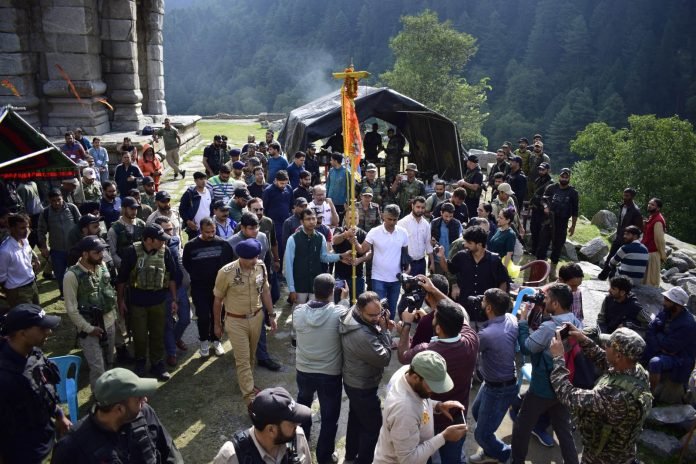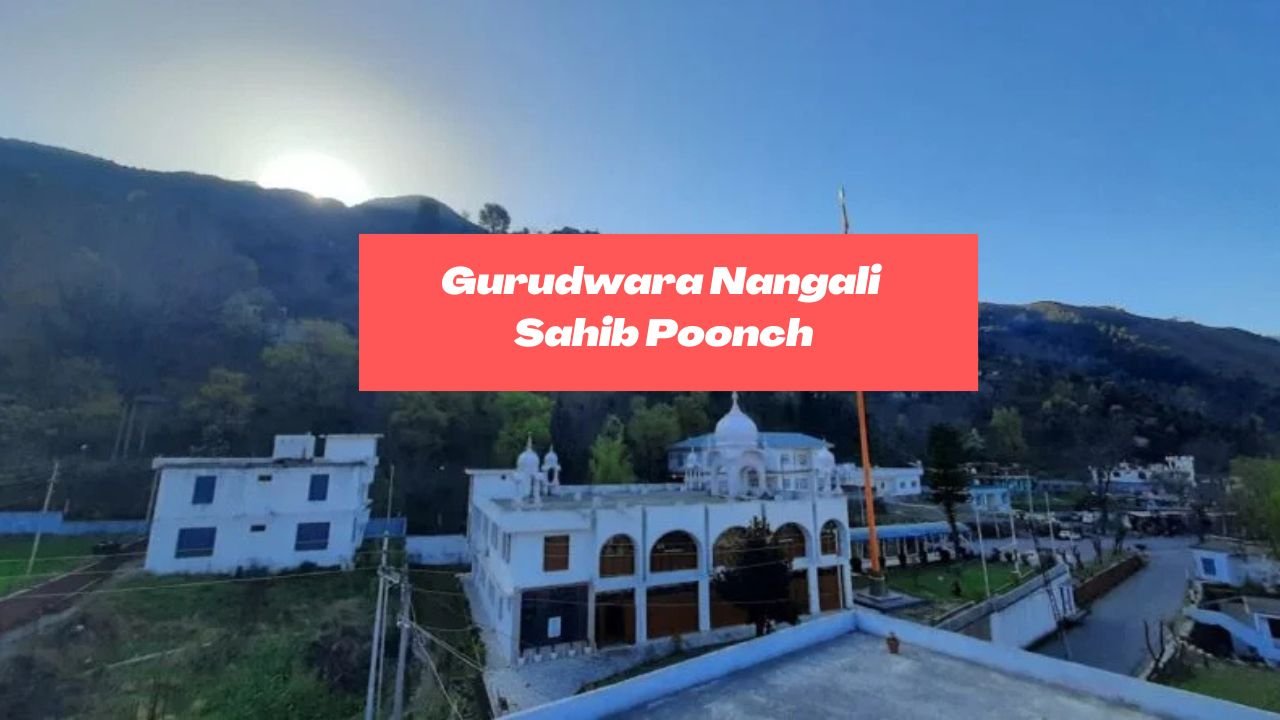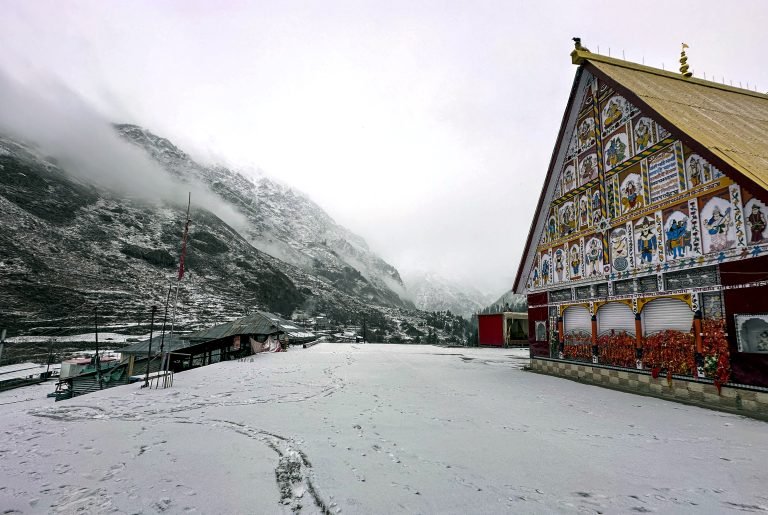The annual Gangbal Yatra has commenced in Jammu and Kashmir’s Ganderbal district, attracting Kashmiri Pandits and devotees of Lord Shiva to one of the most spiritually significant treks in the Himalayas. The sacred journey, which starts from the ancient Naranag temple ruins, covers a challenging mountain trail that leads pilgrims to the pristine Gangbal Lake, also known as Haramukh Ganga.
Spiritual Significance of Gangbal Yatra
Gangbal Lake sits at the base of the majestic Mount Harmukh, considered one of the abodes of Lord Shiva in Hinduism. For centuries, Kashmiri Pandits have carried the ashes of their loved ones to immerse in its holy waters. This ritual earned Gangbal Lake the name “Poor Man’s Ganga”, symbolizing its deep cultural and religious value.
Today, the Yatra is not only a spiritual act of devotion but also a way for displaced Kashmiri Pandits to reaffirm their roots and cultural identity in the Valley. Each year, a traditional puja is performed on the banks of Gangbal Lake, making the pilgrimage a sacred event.
Trekking Routes to Gangbal Lake
The Gangbal Yatra is as much an adventure as it is a religious pilgrimage. The journey offers multiple trekking routes:
- Naranag Route (15 km): The most popular trail begins at the Naranag temple ruins and winds through dense forests, meadows, and rugged terrain.
- Sonamarg Route (25 km): A longer but scenic trail passing through Vishansar Lake and crossing high-altitude mountain passes.
- Bandipore via Arin Route: Another lesser-known trek, ideal for adventure seekers.
Breathtaking Natural Beauty
The trek to Gangbal Lake is renowned for its picturesque landscapes. Pilgrims encounter lush alpine meadows, wild Himalayan flowers, and crystal-clear streams. The trail opens to panoramic views of snow-clad peaks, including Mt. Harmukh (5,380m) and glimpses of the legendary Nanga Parbat (8,126m) in the Karakoram range.
Adding to its charm, Gangbal Lake itself rests at an altitude of 14,500 feet (3,570 meters), surrounded by untouched natural beauty. The lake is home to rainbow and brown trout, making it not just a pilgrimage site but also a haven for nature enthusiasts.
Cultural Experience Along the Trek
Apart from its religious importance, the Gangbal Yatra provides a unique cultural experience. Trekkers often encounter Gujjar and Bakarwal nomads, who migrate with their herds across the high-altitude meadows. This interaction offers a glimpse into Kashmir’s pastoral traditions and heritage.
Best Time to Visit Gangbal Lake
The ideal season for the Gangbal Lake trek is from July to September, when the weather is clear and the trails are accessible. During this period, the meadows bloom with vibrant flowers, and the alpine weather makes the trek challenging yet rewarding.
Why Gangbal Yatra Stands Out
- Spiritual Heritage: A symbol of devotion for Kashmiri Pandits.
- Scenic Adventure: Trekking through some of Kashmir’s most enchanting landscapes.
- Cultural Roots: An annual reminder of tradition and identity.
The Gangbal Yatra in Kashmir is more than a trek—it’s a soulful blend of spirituality, adventure, and cultural connection. For pilgrims, it is a sacred journey to Lord Shiva’s abode; for trekkers, it is a breathtaking expedition into the heart of the Himalayas.
If you seek a mix of faith, nature, and heritage, the Gangbal Yatra is an experience unlike any other in India.
















